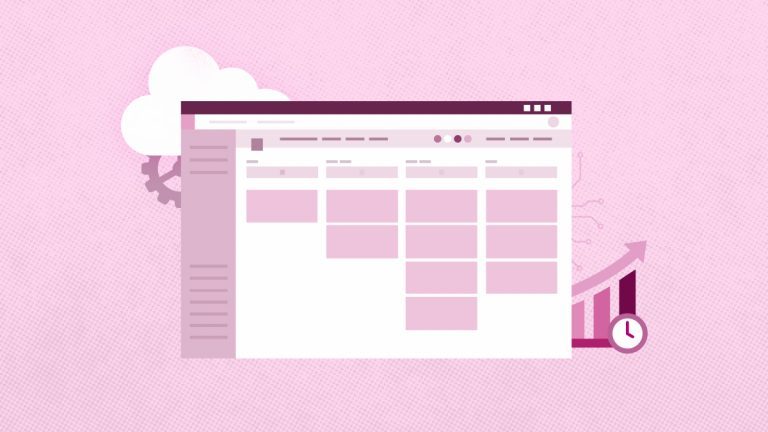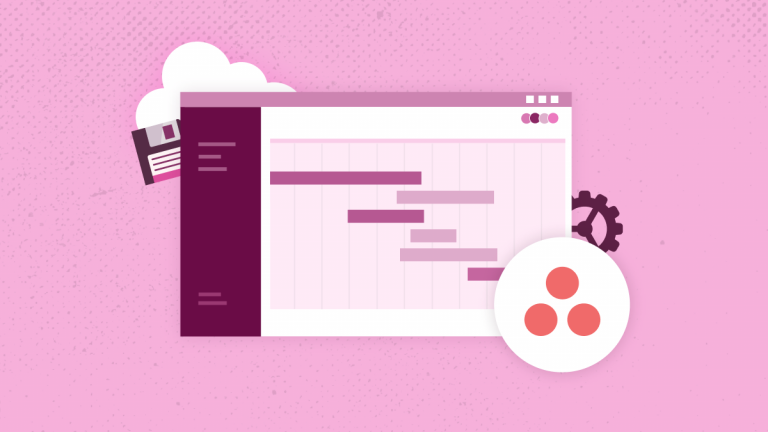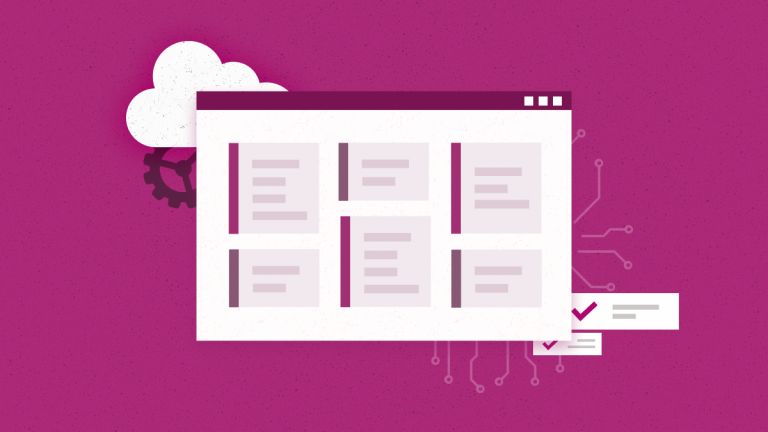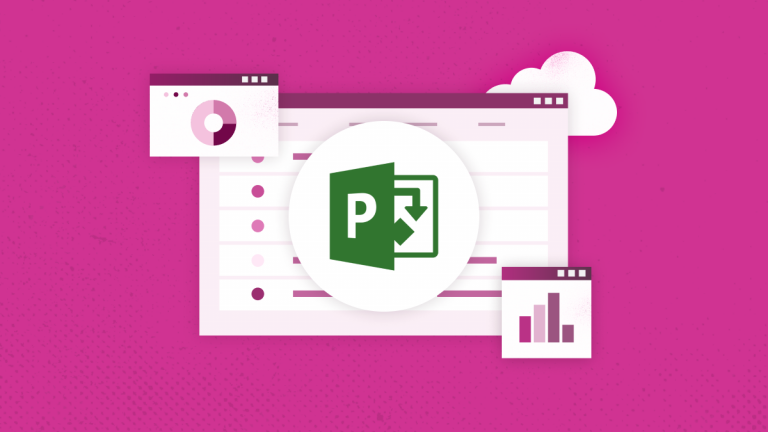
Elena Humeniuk
PPM Consultant
Asana software is a web-based project management and collaboration tool that helps teams organize, track, and manage their work. Former Facebook executives Dustin Moskovitz and Justin Rosenstein brought it to life in 2008. It has since become a popular tool for businesses of all sizes, allowing them to create tasks, set due dates and priorities, and track progress toward completion. Please read the review of Asana to learn more about its features, usage scenarios, and more.
What is Asana software?
Asana software is an open-source, flexible, fast, and modern project management software designed to track tasks and all other relevant data, such as whom it was assigned to, due dates, and the steps required to complete the task.
It provides flexibility, so you can decide which work to track and exactly how to do it. You can use numerous default templates to set up faster and get to work immediately. Asana also allows you to design templates from scratch if you emphasize high customization.

Image source: https://asana.com/
In addition, Asana is free to use for up to 15 teammates. It integrates across various apps, such as:
- Microsoft Teams
- Zoom
- Adobe Creative Cloud
- Salesforce
- Tableau
- Vimeo
- Canva
- Figma
- Dropbox
- Trello.
Asana’s apps and user experience
Asana offers several apps to help users manage their projects on the go.
- Web app is the primary platform for managing projects.
- Mobile work management app is available for iOS and Android devices.
- Browser extension allows users to quickly create tasks and access their task list from within their web browser, whether it’s Chrome, Firefox, or Safari.
- Desktop app is available for Windows and macOS. It provides native experience for managing projects.
As for the user experience, Asana’s interface is clean and intuitive, making navigating its features a breeze. Moreover, it offers a variety of customized options to help users tailor their workflow to their specific needs, such as custom fields and task dependencies. Overall, Asana provides a user-friendly experience that can help teams stay organized and productive.
Security
Asana highly values security and trust. They prioritize protecting the data on their platform through physical, procedural, and technical safeguards to ensure the integrity and security of information.
Organizations should consider using third-party solutions to get an additional layer of protection. FluentPro Backup is the best software providing reliable protection for Asana software. It offers continuous automated backup and restores specific project versions.
Using FluentPro Backup, organizations can:
- Reduce any data loss risks related to human errors.
- Eliminate possible damage to reputation, workflow, productivity, and finances.
- Automate project backup and recovery.
- Get reliable protection and security for clients’ sensitive and all project data.
How does Asana work?
Asana’s interface is relatively easy to use and navigate. You can find your projects, reports, portfolios, and workspaces list on the left-hand side. The main screen has tabs for getting different views (overview, Kanban-style board, timeline), Messages, and Files on the top.
Asana tool includes a robust advanced search feature. When looking for a term, you can specify if you can find it in tasks or conversations. You can search for a task, the attachment, its completion status, and its due date.

Image source: https://asana.com/
Lots of other features are offered, including:

How to use Asana
To use Asana, follow these general steps:
- First, you go to the website and sign up for Asana free version.
- Next, create a project.
- Add tasks to the project and assign them to team members.
- Choose due dates and priorities for each completed task.
- Track deadlines with Asana’s calendar view.
- Collaborate with team members by commenting on tasks or sharing files.
- Monitor progress in work management app using project timeline view.
These are just some general steps for using Asana software, and the specific features and options will depend on your particular use case and goals.
How to use Asana for project management
Asana can be a powerful tool for project management, allowing team task tracking and project collaboration. Its features include task management, calendars, and project timelines. Here’s how you can use Asana to manage your projects:
- Asana project tracking. Create a new project, then give it a name and description that outlines the project’s goals, timeline, and scope.
- Create tasks. Each task should represent work that must be completed as part of the project. Assign the task to a team member, set a due date, and add relevant details or attachments.
- Task organizing. Organize your tasks by creating sections within your project. To do this, click on the “Add Section” button and give the unit a name that reflects the stage or status of the tasks within it. This can help you visualize the project’s progress and identify areas that need attention.
- Collaborate and communicate. Use communication features like comments and file sharing to collaborate with your team members within the Asana app. You can also assign tasks to team members and track their progress.
- Set priorities. Use Asana’s priority features, such as tags or custom fields to identify the most critical tasks within your project. This can help you focus your team’s efforts and ensure essential work is completed on time.
- Track progress. Task completion percentages and progress reports help monitor the progress of your project. Use this to identify areas where you may need to adjust your team’s approach.
- Customize your workflow. Asana offers a variety of customized options, such as custom fields and task dependencies. They can help you tailor your workflow to your team’s specific needs.
Time tracking with Asana
Asana’s time-tracking feature allows users to track the time spent on each task. This feature can be accessed by clicking the clock icon in the task details pane. Users can start and stop the timer as needed. A record of the total time spent on each task is automatic.
In addition to tracking time on individual tasks, Asana provides a project-level time-tracking view. Asana project tracker view allows users to see how much time has been spent on each task in the project and the total time spent on the project.
Asana’s time-tracking feature can be valuable for team management tasks. Teams can track billable hours, or individuals can better understand their productivity or time management habits. By tracking time spent on tasks, users can identify areas where they may be spending too much time, adjusting their workflow as needed.
Overall, Asana’s time tracking feature is valuable for anyone looking to manage their workload more effectively. Whether you’re working on a small project or a large team, Asana can help you to stay on top of your tasks and achieve your goals.
Asana automation
The software provides multiple features helping automate repetitive tasks and streamline workflows. Here are some of them:
- Rules can automate tasks based on specific triggers or conditions. For example, you can create a rule that assigns a task to a team member when a new task is created in a particular project.
- Custom fields can be used to trigger specific actions or automate tasks. For example, you can configure a custom field that triggers an email notification when a task is marked as “Urgent”.
- Templates can automate the process of creating new projects and tasks. You can create templates for recurring projects, including predefined tasks, due dates, and other details.
Asana automation helps save time and increase productivity by reducing manual and repetitive tasks.
Asana for business
Asana can be a powerful tool for businesses of all sizes, helping them with online project planning, efficient task management, progress tracking, and team communication. Teams can collaborate on projects in real time and ensure that tasks are completed on time and within budget.
The project management tool Asana can help businesses optimize their workflows with custom fields and task dependencies to suit their needs. You can manage resources more effectively by identifying areas where resources may be over or underutilized. This can help businesses optimize their resource allocation and improve their bottom line.
Companies can achieve their goals by providing a clear framework for progress tracking and goal attainment, helping teams stay focused and motivated toward achieving their objectives.
Asana for teams
The solution can help teams collaborate effectively, stay organized, and deliver projects on time and within budget. Asana pricing plans provide various features for project management that can help businesses of any size. Small or medium-sized organizations, as well as larger enterprises, will find great value in this solution. Benefits include:
- Asana task management
- Communication
- Managing projects
- Tracking progress
- Optimized workflow
- Project reporting
- Portfolios
- Time tracking
- Workload
This centralized platform for project management use and collaboration can meet all teams’ needs and increase efficiency.
Benefits of Asana
Let us look at what features make it a good option.
Multiple Styles (Agile, Kanban, Scrum) and Project Views
Asana is flexible enough to support Agile, Kanban, and Scrum project management styles. You can mix and match various types like bug tracking, product launches, work requests, sprint planning, roadmaps, and feedback to ensure Asana matches your style of operation.

Image source: https://asana.com/
Users can also view and manage projects in different ways. For example, you can use Kanban boards, a timeline view, or a plain and simple calendar view. Moreover, you can access a short-term outlook for adjustments or a long-term, big-picture view of the projects. You can even create customizable dashboards to see the most important updates first.
Asana Automation
The software helps organizations automate repetitive tasks and processes that slow workflow. You can get basic automation by creating custom rules, triggers, and actions with workflow builder. This will save you time to focus on handling more critical activities.
Teamwork
Remote employees often face difficulties in communicating with each other. Data can get lost or misinterpreted, causing projects to stall or be unsuccessful. Asana provides a centralized platform for teams to manage their projects, tasks, and communication. It allows users to assign tasks to team members, set due dates, adjust deadlines, and prioritize tasks. With task dependencies, users can link related tasks and ensure they are completed correctly.
Asana’s calendar view helps teams plan their work around each other’s schedules and stay updated on changes. The discussions feature allows team members to collaborate and discuss tasks directly within the platform. This ensures that all project-related communication is centralized and easily accessible.
Powerful Integrations
Despite all of Asana’s task management features, you can take its performance to the next level by integrating it with other tools. The software integrates across communication, connectors, IT and development, finance, HR, productivity, reporting, marketing, design, sales, services, security, and compliance. Available integrations vary depending on the package you’re on.
Versatility
Asana is a highly versatile and adaptable project management software. This benefit enables you to accommodate various management methods, company sizes, and industries. The software is an excellent option for multiple areas like marketing, sales, product development, operations, HR, finance, and IT, among many others.
Versatility and flexibility enable you to facilitate collaboration across multiple departments, which is essential for streamlining workflows and enhancing productivity. Asana can be tailored to suit any use case, no matter the need or number of projects.
Accessible Design
Asana offers a user-friendly dashboard design. It is simple for users, even those new to the platform, to quickly grasp the basics. The main features are located on the left-hand side of the screen, providing easy access. The top tabs make navigating the software a breeze. The option to hide the features to navigate for some time allows for more screen real estate. Moreover, Asana enables users to customize the dashboard’s look and emphasize specific features that their team requires.
Asana Project Management Software – Weaknesses
Now, let us look at its shortcomings.
Limitations of the Mobile Version
The mobile apps let you do everything you usually do in the web version. You can assign tasks, update the steps, and add comments. You can add quick updates, even if you’re offline, and it’ll update it across the app once you’re back online.
However, using a full-sized screen version is better for dealing with a high volume of work. The number of tasks you have can also slow down the speed of the mobile version.
Difficulty in Setting Up
Asana has a lot of features and a very open-ended design. Setting it up and getting used to the software can take some time. To this end, guides, interactive lessons, and blog posts are available to help you get started with the app.
Lack of Project Management Features
Asana is work management software rather than full-scale project management software. It is not suitable for users who must manage, let’s say, around 60 big projects, each with 100s of tasks and sub-tasks.
Security
Asana offers top-notch security features for its Enterprise users. However, the lower tiers provide a different level of protection. It’s important to note that the Asana free tier gathers data on how you use the software, including your mobile usage.
How much does Asana cost?
Asana pricing and options may vary depending on your needs and the number of teammates. Asana licenses include:
Asana Basic
The basic plan is free and offers unlimited tasks, projects, messages, and file storage. It allows you to collaborate with up to 15 teammates. You can access iOS and Android support, time tracking, and integrations across over 100 apps.
Asana free limitations won’t affect your workflow. You can access unlimited projects, tasks, messages, activity logs, and file storage.
This package is excellent for small businesses, but you should get an upgrade if you want more features.
Asana Premium
Asana Premium plan is suitable for businesses with more than 15 users. It provides additional features such as a timeline, workflow builder, unlimited dashboards, built-in and custom templates, and milestones.
The timeline view helps ensure all deadlines and projects are on schedule. You can also monitor how specific tasks and deadlines are connected, identify issues, and prevent conflicts.
Asana Business
Asana Business plan is ideal for medium to large-sized businesses. It offers portfolios, goals, custom rule builders, workload, and integration with Salesforce, Tableau, and Power BI. The software provides an excellent tool for project portfolio management.
The portfolio view includes project name, status, due dates, priorities, etc. You can also use a workload management tool. It can help you decide who has extra bandwidth and who is overloaded with work. This option can improve your resource utilization and boost productivity.
Asana Enterprise
With Asana Enterprise plan, you get access to all the features. Features exclusive to this Asana license are:
- Custom branding elements
- Admin announcements
- Data export
- Cross-regional backups
- Service accounts
- 24/7 support
The plan also provides enterprise-grade security, data governance, and privacy controls.
Depending on your organization’s needs and goals, you can choose any license cost with great features for project management.
Conclusion
When it comes to project management, Asana is a great collaborative tool. It offers Gantt charts, Kanban boards, Agile, and Scrum management styles. The solution is highly flexible and adaptable, with various features, including task assignments, priority settings, due dates, and chat functions. Its dashboard is easy to understand, making it an excellent option for businesses of any size.
The software has good security features too. Pricing for Asana depends on the license you choose, the number of teammates, available features, etc.
Asana’s project management system is an excellent choice for building your workflow, managing tasks efficiently, and meeting all your business goals.
Find out how to use Asana more efficiently from our blog











